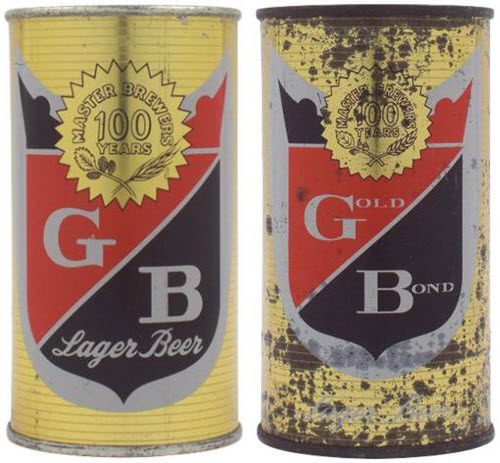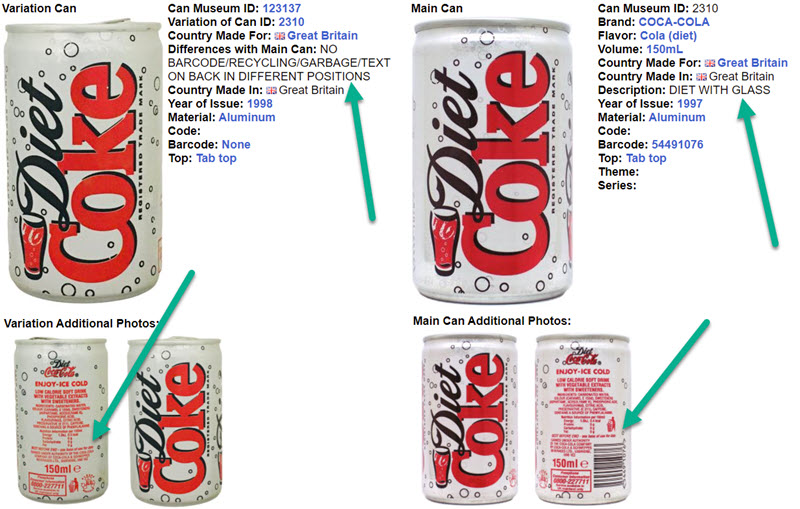The
Description shouldn't be too wordy, but should contain words that describe important unique text or features of the can.

In this example, both are different
Gold Bond Lager cans. The first can would have a
Description
of
MASTER BREWERS 100 YEARS - G B ONLY
and the second can would have a
Description of
MASTER BREWERS 100 YEARS - LARGE G AND B
If the can is a
Variation (same design, but minor differences), the
Differences with Main Can should describe those differences.

In this example, both cans are
150mL Diet Coke Great Britain cans. From the front the design is identical, however on the back there are clear differences making this a variation.
The
Main Can has a
Description of
DIET WITH GLASS and the
Variation has
Differences with Main Can as
NO BARCODE/RECYCLING/GARBAGE/TEXT ON BACK IN DIFFERENT POSITIONS.